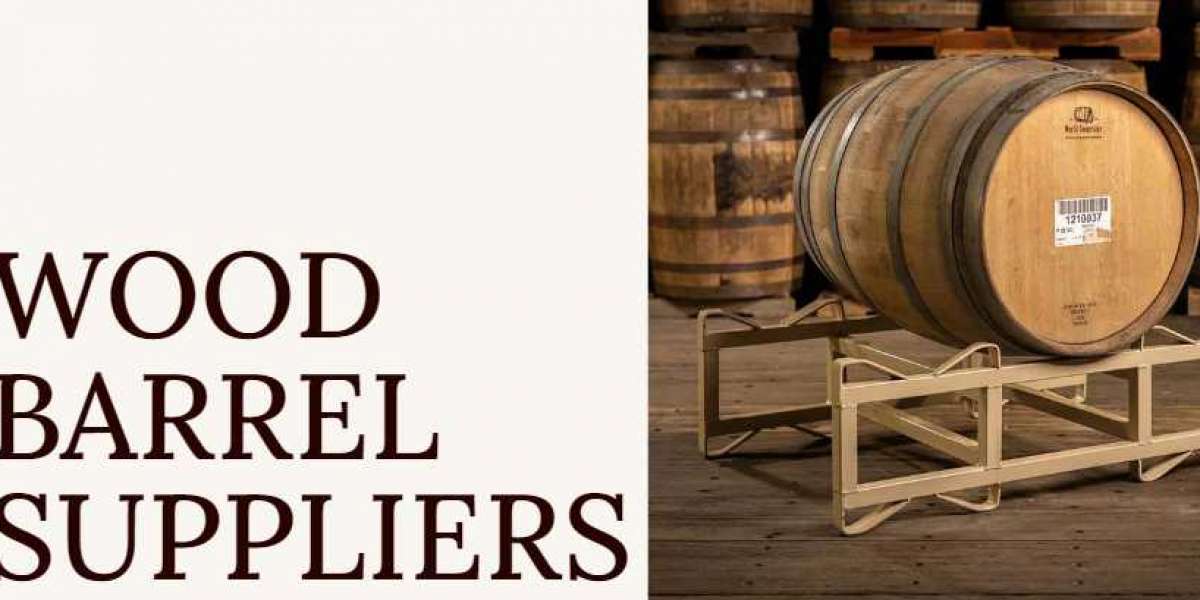Whiskey barrels are an essential component in the whiskey-making process, influencing the flavor, aroma, and overall character of the final product. The craftsmanship involved in producing whiskey barrels ensures that each batch of whiskey develops a unique taste profile. In this blog, we will explore how whiskey barrels are made, the factors that contribute to their authenticity, and why they are crucial for producing high-quality whiskey.
The Art of Whiskey Barrel Production
The production of whiskey barrels is a meticulous process that requires expert craftsmanship and high-quality materials. Traditionally, whiskey barrels are made from American white oak, a wood species that imparts distinct flavors such as vanilla, caramel, and spice. The steps involved in making whiskey barrels include:
Selecting the Wood: The first step in crafting whiskey barrels is selecting the right type of oak. American white oak is preferred due to its porous nature, which allows whiskey to interact with the wood, absorbing its flavors and developing complexity.
Cutting and Seasoning: Once the oak is selected, it is cut into staves (wooden planks) and left to season for several months to reduce moisture content and enhance the wood's natural flavors.
Shaping the Barrels: The seasoned staves are carefully arranged and bent into the shape of a barrel using heat and water. This process requires precision to ensure a tight fit without the need for nails or glue.
Toasting and Charring: One of the most crucial steps in whiskey barrel production is toasting and charring the inside of the barrels. Toasting caramelizes the natural sugars in the wood, while charring creates a layer of activated carbon that filters impurities and enhances the whiskey’s flavor.
Sealing and Testing: Finally, the barrels are sealed with wooden heads and metal hoops before being filled with water to test for leaks. Only perfectly sealed whiskey barrels are used for aging whiskey.
Ensuring Authenticity in Whiskey Barrels
Authenticity in whiskey barrels is critical to ensuring the quality and integrity of the whiskey. Here are some factors that contribute to authentic whiskey barrels:
Source of the Wood: Genuine whiskey barrels are crafted from high-quality oak sourced from sustainable forests. The geographical origin of the wood can also influence the flavor of the whiskey.
Handcrafted Techniques: Traditional cooperage techniques passed down through generations ensure that whiskey barrels are built with precision and expertise, preserving their authenticity.
Proper Aging Process: Authentic whiskey barrels are used for aging whiskey over extended periods, allowing the spirit to extract flavors from the wood naturally. Shortened aging periods or the use of artificial flavoring techniques can compromise authenticity.
Stamping and Certification: Reputable distilleries and cooperages stamp their whiskey barrels with marks indicating the year of production, distillery name, and batch number. These markings help verify the authenticity of the barrels.
Reusability and Recycling: While whiskey barrels are often used only once for bourbon production, they can be repurposed for aging other spirits like scotch, rum, or even beer. Authenticity is maintained when barrels are properly reconditioned and stored.
The Role of Whiskey Barrels in Flavor Development
Whiskey barrels are not just storage containers; they are active participants in the maturation process. Over time, whiskey barrels contribute various characteristics to the spirit, including:
Color: Whiskey barrels naturally infuse a rich golden hue into the spirit as it ages.
Flavor Profile: The interaction between the whiskey and the charred oak results in flavors like vanilla, caramel, spice, and smoky notes.
Mouthfeel and Smoothness: The aging process in whiskey barrels helps mellow out harsh alcohol notes, creating a smoother and more refined whiskey.
Oxidation and Evaporation: Whiskey barrels allow controlled oxidation, which enhances complexity while also leading to the “angel’s share” – the portion of whiskey lost to evaporation.
Conclusion
Whiskey barrels play an indispensable role in whiskey production, shaping the final product’s taste, aroma, and overall quality. Authenticity in whiskey barrels is maintained through traditional craftsmanship, high-quality materials, and adherence to strict aging processes. Whether used for bourbon, scotch, or other spirits, whiskey barrels remain a cornerstone of the whiskey industry, ensuring that each bottle delivers a distinct and memorable experience.
By understanding the art of whiskey barrel production and the importance of authenticity, whiskey enthusiasts can better appreciate the craftsmanship that goes into every sip. So, the next time you enjoy a fine whiskey, remember that its rich and complex flavors owe much to the whiskey barrels that aged it to perfection.







